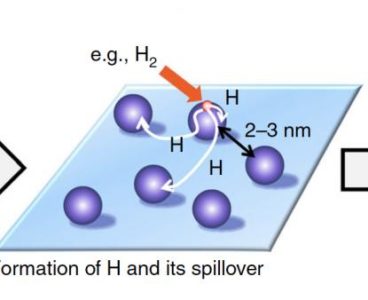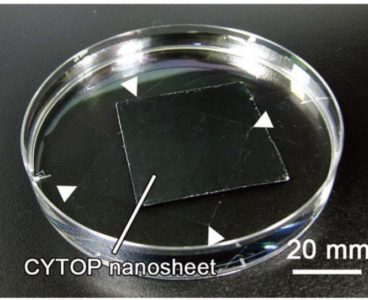A one-step method enables scalable and more environmentally friendly production of plant-derived plastic monomers, paving the way towards the mass production of a sustainable alternative to petroleum-based materials. An international team, including Kiyotaka Nakajima of Hokkaido University, Japan, and Emiel Hensen of Eindhoven University of Technology, the Netherlands, has developed an energy-efficient method to synthesize…
Advancing Ultrafast Cluster Electronics
Hokkaido University researchers have developed a computational method that can predict how clusters of molecules behave and interact over time, providing critical insight for future electronics. Their findings, published in the journal Scientific Reports, could lead to the creation of a new field of science called cluster molecular electronics. Single molecule electronics is a relatively…
A Protein That Makes Skin Cancer Cells More Invasive
Loss of a protein called TRIM29 promotes cancer cell invasion in a common type of skin cancer, suggesting a novel diagnostic marker and a possible therapeutic target. Squamous cell carcinoma is a common type of skin cancer, usually affecting skin that is exposed to the damaging ultraviolet rays of the sun. A protein that normally…
Methane to Syngas Catalyst: Two For the Price of One
Hokkaido University researchers have created an improved catalyst for the conversion of methane gas into syngas, a precursor for liquid fuels and fundamental chemicals. Syngas, also known as synthesis gas, is a mixture made primarily of carbon monoxide and hydrogen and is used to manufacture polymers, pharmaceuticals, and synthetic petroleum. It is made by exposing…
Mapping Species Range Shifts Under Recent Climatic Changes
The inclusion of taxon-specific sensitivity to a shifting climate helps us understand species distributional responses to changes in climate. Marine species in the eastern Bering Sea are not shifting their distribution ranges fast enough to keep track of current changes in climate, according to a study led by researchers at Hokkaido University. As global climate…
The Right Squeeze for Quantum Computing
Nanomaterials Formed through Mimicking Biology
Precise control of nanostructures is key for forming functional nanomaterials, which can enhance electronics, sensors and drug delivery, among many other applications. Researchers are investigating how to mimic biology to fabricate nanomaterials, because biomolecules are able to bind with specific targets, self-assemble, and build complex structures. For example, functional inorganic structures could be fabricated by…
Why Noise can Enhance Sensitivity to Weak Signals
A team of Japanese researchers has discovered a new mechanism to explain stochastic resonance, in which sensitivity to weak signals is enhanced by noise. The finding is expected to help electronic devices become smaller and more energy-efficient. Noise is generally a nuisance that drowns out small signals. For example, it can prevent you from catching…
An Unbiased Approach for Sifting Through Big Data
A new method could help researchers develop unbiased indicators for assessing complex systems such as population health. Researchers have developed a complex system model to evaluate the health of populations in some U.S. cities based only on the most significant variables expressed in available data. Their unbiased network-based probabilistic approach to mine big data could…
UV-Irradiated Amorphous Ice Behaves Like Liquid at Low Temperatures
Ice analogs mimicking interstellar ice behave like liquids at temperatures between -210°C and -120°C according to Hokkaido University researchers. This liquid-like ice may enhance the formation of organic compounds including prebiotic molecules and the accretion of dust to form planets. Molecular bonds in the ice are severed when irradiated by ultraviolet light inside interstellar molecular…
New Wrapping Material Enables High Quality Bioimaging
A nanosheet made of organic polymers has been developed to prevent the drying and deforming of biological samples, thus enabling high-quality imaging under microscopes. Be it cosmology or biology, the advancement of science largely relies on the advancement of measuring instruments and methodology. In the past couple of decades, scientists’ passion to see the invisible…
New Wrapping Material Enables High-quality Bioimaging
A nanosheet made of organic polymers has been developed to prevent the drying and deforming of biological samples, thus enabling high-quality imaging under microscopes. Be it cosmology or biology, the advancement of science largely relies on the advancement of measuring instruments and methodology. In the past couple of decades, scientists’ passion to see the invisible…
Utilizing Tumor Suppressor Proteins to Shape Nanomaterials
A new method combining tumor suppressor protein p53 and biomineralization peptide BMPep successfully created hexagonal silver nanoplates, suggesting an efficient strategy for controlling the nanostructure of inorganic materials. Precise control of nanostructures is a key factor to form functional nanomaterials. Biomimetic approaches are considered effective for fabricating nanomaterials because biomolecules are able to bind with…
Atomic ‘Re-Packaging’ Behind Metallic Glass Mystery
An international collaboration involving Hokkaido University’s high-voltage electron microscope has solved a puzzle about the atomic structure of metallic glasses that has baffled scientists for four decades. Unlike crystalline alloys, atoms in metallic glasses are randomly organized, a structure called amorphous. This makes them stronger, more flexible and resistant to corrosion. Due to these excellent…
Researchers Manipulate Gene Expression Using Light, Create Double-Headed Zebrafish
A Hokkaido University researcher has successfully developed a method to accurately manipulate gene expression by light illumination and demonstrated its usability by creating double-headed zebrafish. It has been difficult to freely manipulate the timing and duration of gene expression using existing gene manipulation technologies, which depend on organism’s gene regulating mechanism. In recent years, methods…
Shell-Swinging Snails Knock Out Predators
Until now, snails were thought to protectively withdraw into their shells when attacked. However, an international research team has found a pair of snail species that use their shells like a club to hit predators and knock them over. Evolutionary scientists have been questioning how predator-prey interactions affect the evolution of the prey. However, they…
Cold Medicine Could Stop Cancer Spread
Hokkaido University researchers have discovered that a nonsteroid anti-inflammatory drug used for treating colds suppresses the spread of bladder cancers and reduces their chemoresistance in mice, raising hopes of a future cure for advanced bladder cancers. Bladder cancer is the seventh most common cancer in males worldwide. Every year, about 20,000 people in Japan are…
Unraveling the Jaw-Dropping Goblin Shark
A research team, led by Emeritus Professor Kazuhiro Nakaya of Japan’s Hokkaido University, analyzed world-first footage captured by public broadcaster NHK in which two goblin sharks separately captured prey on a total of five occasions. The research has unraveled a century-old mystery surrounding how the deep-sea shark utilizes its protruding jaws, among other factors, to…
Heading Toward Molecular Robots
Scientists at Japan’s Hokkaido University have developed light-powered molecular motors that repetitively bend and unbend, bringing us closer to molecular robots. Researchers are working on mimicking cellular systems to develop molecular motors that can move or even deliver drugs to target tissues. Engineering such motors may ultimately lead to molecular robots that can execute more…















